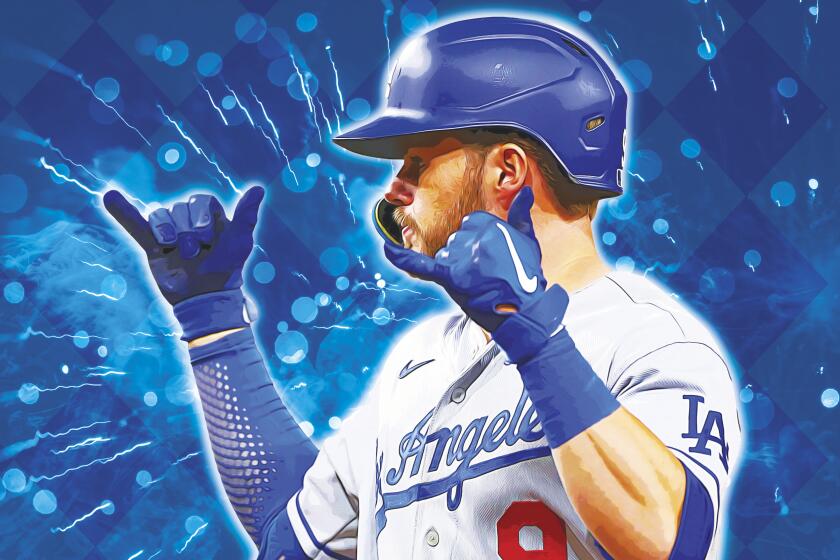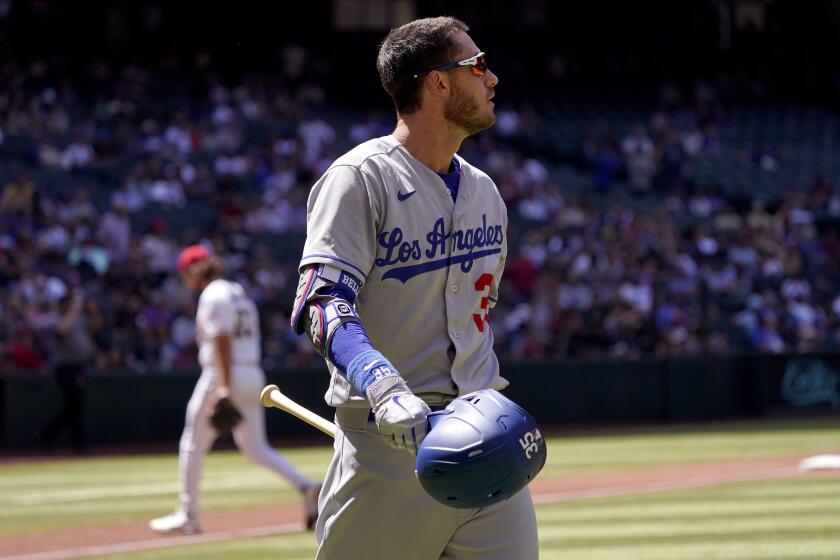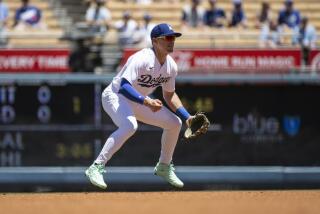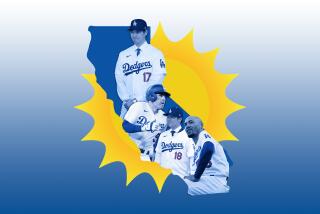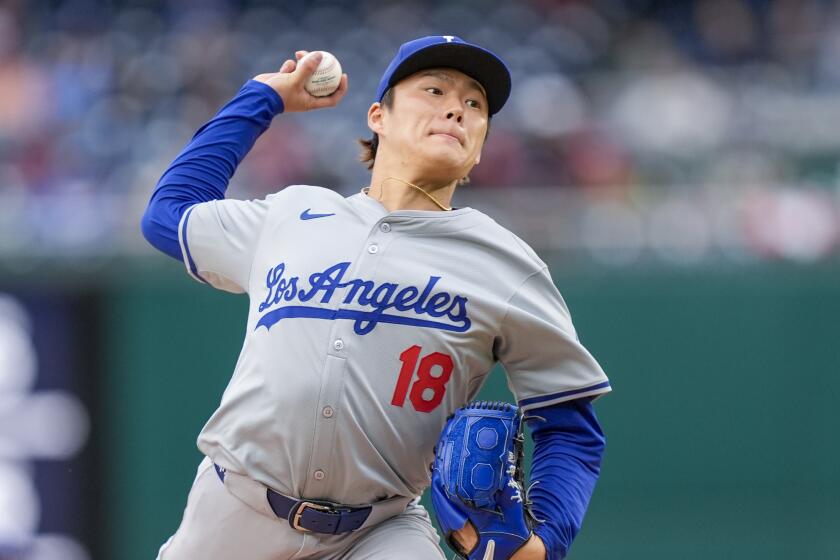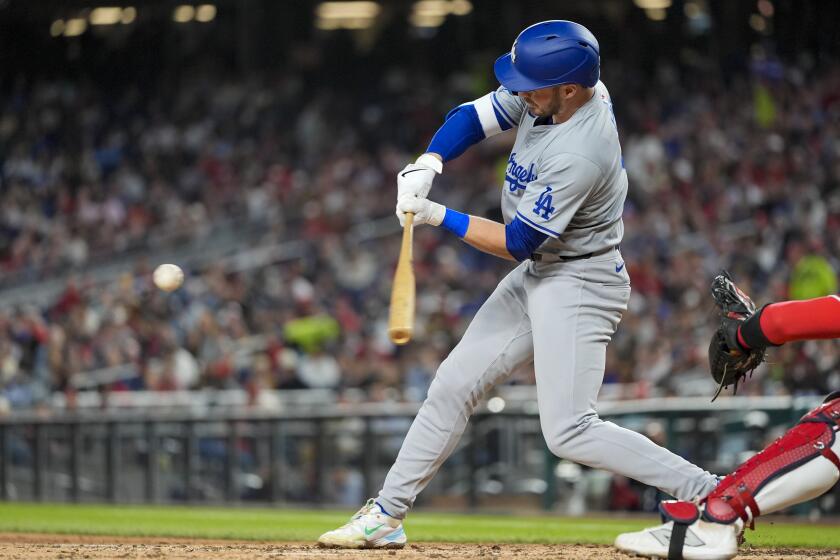Outdrawn by Angels, outbid by Pirates, Dodgers found salvation 10 years ago Sunday
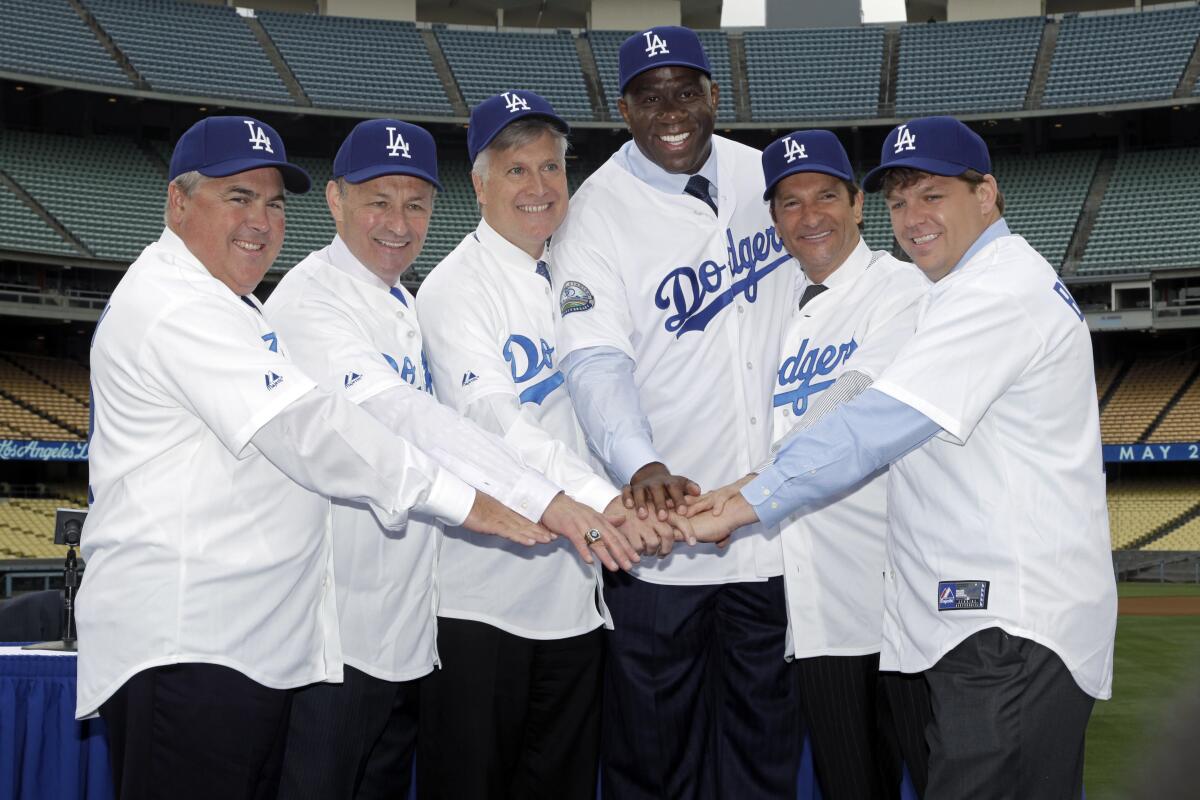
The Dodgers were shopping for a veteran catcher. He could have been the starting catcher. He did not need to be a star.
They were interested in bringing back Rod Barajas. He was coming off a season in which he had hit 16 home runs. He was 36. For a one-year stopgap, he would have been a fine fit.
The Pittsburgh Pirates signed Barajas. The Pirates agreed to pay him $4 million. The Dodgers were not sure whether they could afford that amount.
This was life with the Dodgers a mere decade ago. During the tumultuous months of a franchise sale supervised by a bankruptcy court, with ownership of the team in limbo as contestants from Mark Cuban and Stan Kroenke to Rick Caruso and Jared Kushner competed in the bidding, the Dodgers still had to patch together a roster for the coming season.
In 2011 the Dodgers had fallen out of the top 10 in player payroll, outspent by the Minnesota Twins, who only a decade before had nearly been contracted. For the only time in the 62 years the teams have shared the Southland, the Angels outdrew the Dodgers.
After that season, in a court filing one week before Frank McCourt agreed to sell the team, Major League Baseball accused McCourt of “looting” $189 million of team revenue for personal purposes and claimed he had “completely alienated the Dodgers’ fan base.”
Ten years ago Sunday, Guggenheim Baseball Management completed its purchase of the team for a then MLB-record $2.15 billion. Under new ownership, the Dodgers have revitalized their relationship with the community, preserved and enhanced their stadium, and delivered a World Series championship.
And, by way of understatement, they no longer are concerned about getting outbid by the Pirates.
“It’s completely changed,” Clayton Kershaw said, pausing in appreciation, or for dramatic effect, or maybe both. “For the better.”
Gavin Lux struggled physically and mentally to begin his MLB career, but now in his second full season with the Dodgers he’s playing like a top prospect.
On the day the new owners took over, the Dodgers beat the Colorado Rockies, with a starting infield of James Loney at first base, Mark Ellis at second, Dee Gordon at shortstop and Adam Kennedy at third base. The next day, Juan Rivera was at first, Justin Sellers at shortstop, and Jerry Hairston Jr. at third.
Matt Kemp, coming off a season in which he finished second for the National League most valuable player award, was batting .411.
After the first 25 games of the new season, the Dodgers and their improvised roster boasted the best record in the league.
On the day after the sale closed, at a Dodger Stadium news conference that was part exorcism and part coronation, Magic Johnson smiled. He was the face of the new ownership group. Everything would all be right, and Johnson knew just what to say to shut down persistent questions about McCourt.
“Let’s move forward, please,” Johnson said that day. “Frank’s not here. He’s not a part of the Dodgers anymore. We should be clapping for just that.”
Stan Kasten, the new president, announced the Dodger Stadium parking price would be cut from $15 to $10.
For Day 1, and for that 2012 season, that might have been enough. The season already was underway, the team was hanging in there, and the fans could anticipate the new owners spending freely when free agency arrived in the fall.
Johnson met with the players and told them they would get whatever they needed to succeed. Mark Walter, the controlling owner, told the team all the owners were here to win, full stop.
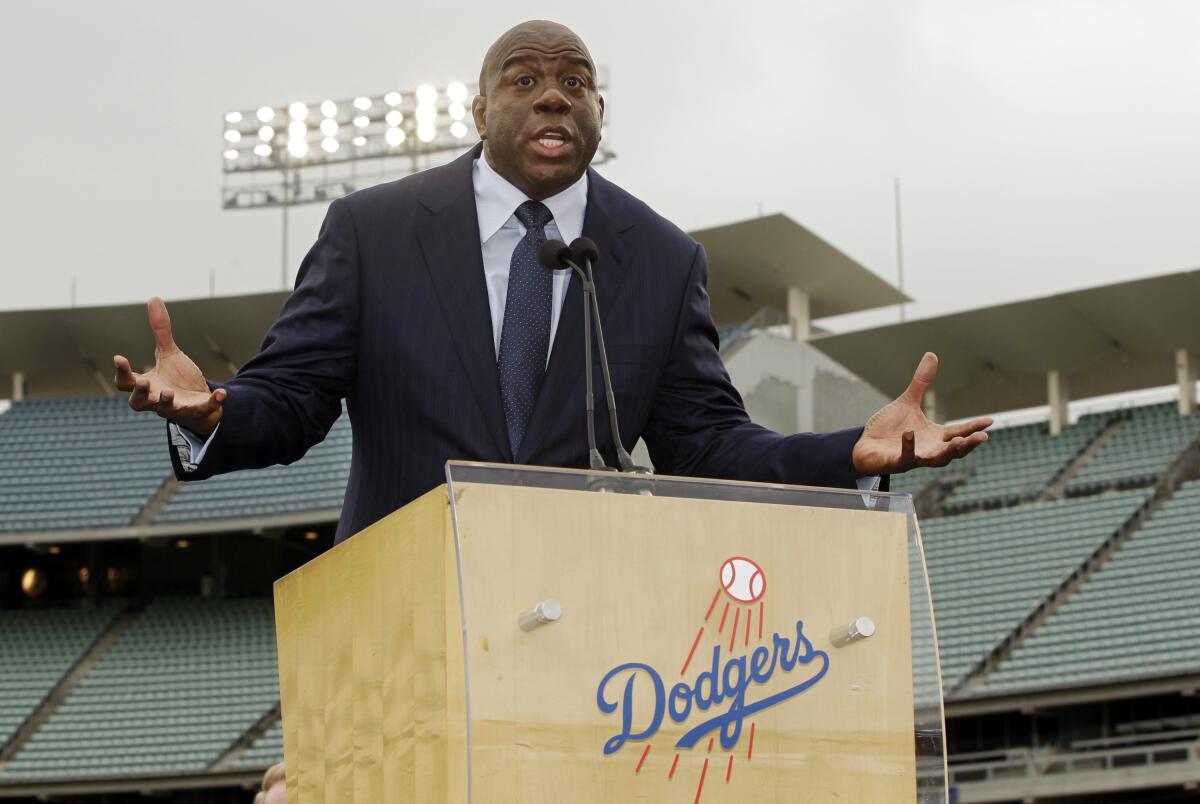
“We could feel the energy through them,” said Hairston, now a broadcaster for the team’s SportsNet LA television channel. “From Day 1, they did everything. They did even more than they had promised.”
Said Kenley Jansen, who was in his first season as the Dodgers’ closer: “When you have Magic Johnson’s face on it — and you know what Magic did here — I don’t think Magic would come in and it would be a flop.
“For Magic to commit like that, you knew this was going to be something where they didn’t mess around.”
It is easy, and almost cliché, for a new owner to promise better days ahead. It is difficult to deliver, at least right away. The new owner could decide to take some time to learn the baseball business, or jump into the business without understanding it, or bring in his own management team and endure a transition period.
“In most situations,” said Ned Colletti, the Dodgers’ general manager in 2012, “you don’t have somebody like Stan attached to the deal.”
Kasten had run the Washington Nationals, and the Atlanta Braves, and even the NHL’s Atlanta Thrashers. Walter would continue to live in Chicago and tend to his day job. Kasten would run the Dodgers.
“In this case, there was no learning curve,” Colletti said. “You had a veteran of success in Stan. You didn’t have to wait for trial and error. You didn’t have to wait for ownership to get up to speed.”
Kasten asked Colletti and Don Mattingly, then the Dodgers’ manager, what ownership could do immediately to help.
“Take care of the wives,” Mattingly said he told Kasten.
Done. The palatial clubhouse expansion would have to wait for the offseason, but a family room redecorated with new television screens, furniture and carpeting could be completed right away.
“What happens,” Mattingly said, “is that guys go home and the girls say, ‘Man, these guys are awesome.’ ”
Colletti told Kasten about how much the Dodgers, once the game’s gold standard for player development, had let their minor league system atrophy, particularly in Latin America. In June and July, just as teams plan for the trade deadline, they can sign prospects from Latin America.
“I was always faced with the question of, what do I want to do: Keep money on the side so we can get a player or two for the stretch drive, or spend it on Latin America?” Colletti said.
“I had to make a choice every year, which was not an advantageous position to be in, where you can’t continue to fuel your system because your big league team has a chance to win.”
Frank McCourt: The gift that keeps on giving
In 2008, three years before McCourt’s Dodgers filed for bankruptcy, the team did not account for any of the 115 international signings of at least $100,000.
On June 29, 2012 — eight weeks after Guggenheim took over — the Dodgers signed Cuban outfielder Yasiel Puig for $42 million. On a scouting trip to see Puig, they discovered Mexican pitcher Julio Urías, whom they signed later that summer, when he turned 16.
Urías called himself “The Teenager” when he made his major league debut at 19. He recorded the final out of the World Series in 2020, and he blossomed into a 20-game winner in 2021.
The 2012 roster remained a question mark. The money no longer was in question, of course, and on June 12 the Dodgers signed outfielder Andre Ethier to an $85-million contract extension.
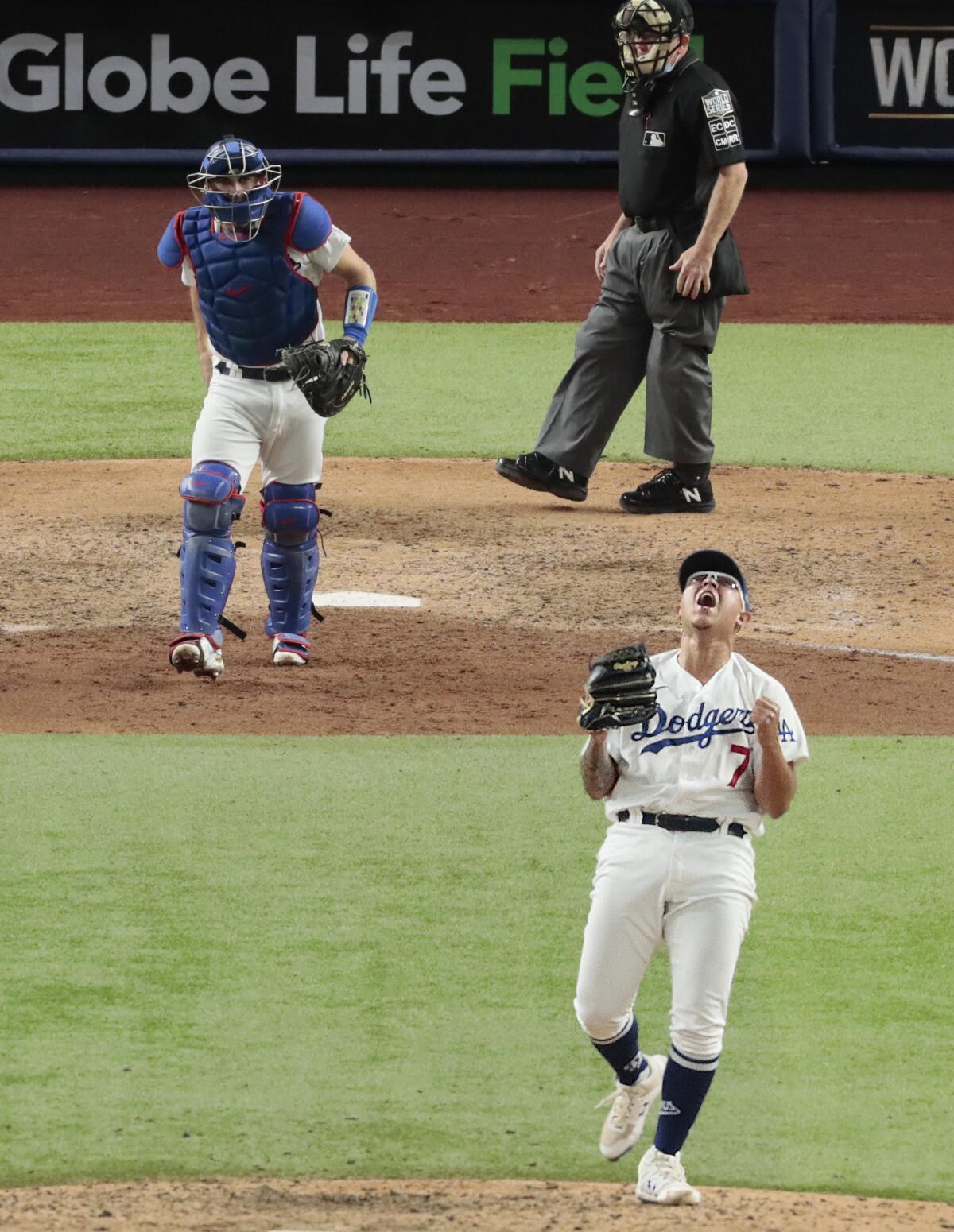
Over the previous winter, Colletti had to cobble together a roster without any certainty about when the team would be sold, or what the future might look like. McCourt had given him what he considered a fair budget, given the circumstances. Colletti signed nine veterans: Ellis, Kennedy, Hairston, Rivera, catcher Matt Treanor, and pitchers Chris Capuano, Todd Coffey, Aaron Harang and Mike MacDougal.
All were over 30. All were signed to one- or two-year contracts. In 2012, none would make more than the $4 million Barajas got from the Pirates.
For five — Coffey, Kennedy, MacDougal, Rivera and Treanor — it would be the final season of their careers.
“We were going to stock it with older players that had great character,” Colletti said. “They were not at the premier apex of their careers, but they were guys that really had the right attitude, the right approach for the situation we were in.
“That team was not necessarily star-studded, certainly not in comparison to today’s Dodgers. But they played hard. They set a tone. They gave us a reason.”

By May 27, the Dodgers had built a 7-1/2 game lead in the National League West. They went 11-17 in June, but still they maintained the best record in the league through June 25.
On the final day before the All-Star break, the Dodgers lost, shut out for six innings by an Arizona Diamondbacks rookie who won his first major league game that day, guy by the name of Trevor Bauer. Nonetheless, the Dodgers were in first place, by half a game over the San Francisco Giants, and Walter said Kasten and Colletti could spend as they wished to improve the team.
“I’m not trying to save a dollar,” Walter said at the time. “I’d rather say we have a great team and maybe spend a little too much.”
The reinforcements no longer needed to be along the lines of Luis Cruz, an infielder who arrived at Dodger Stadium in his 12 th professional season with no major league home runs, or Bobby Abreu, who had been released by the Angels at 38 to open a roster spot for Mike Trout.
Kasten told Colletti to think big, and to reconsider players he might have dismissed as too expensive. That, really, was what rival owners had feared.
The runner-up in the Dodgers bidding: the partnership of Steve Cohen, now owner of the New York Mets, and Patrick Soon-Shiong, now owner of the Los Angeles Times. Since completing his purchase of the Mets in late 2020, Cohen has spent so freely that a new level of the luxury tax unofficially carries his name. And yet Walter had figured out how to outbid Cohen, not through personal wealth but by leveraging his company’s insurance funds.
Colletti basically built the 2012 roster twice, in the winter and again in the summer. In a 10-day span that started on July 25, the Dodgers traded for shortstop Hanley Ramirez, outfielder Shane Victorino and pitchers Joe Blanton, Randy Choate and Brandon League.
The titanic move followed on Aug. 25, when the Dodgers acquired first baseman Adrián González, pitcher Josh Beckett, infielder Nick Punto and injured outfielder Carl Crawford from the Boston Red Sox. The general manager who was not sure if he could take on $4 million for Barajas had just taken on $260 million in the trade.
Under McCourt, the only words more popular at Dodger Stadium than “play ball” were “cash neutral.” Colletti had traded for the likes of Manny Ramirez, Greg Maddux and Casey Blake by getting the other team to pay off the contracts — and, in the case of Blake, the Dodgers had to throw in a future All-Star named Carlos Santana to get the deal done.
As he sat across a room from Walter and negotiated with the Red Sox, Colletti asked his Boston counterpart about the Sox paying off just a fraction of that $260 million. Walter shot Colletti a glance: Don’t you dare lose this deal over trying to get some cash back.
“I thought it was so ironic,” Colletti said. “I had come from one era to another.”
The Dodgers had added close to half a billion dollars to their payroll in three months, and Kasten would not say whether there would be a limit to their spending.
“I haven’t found it yet,” he said at the time. “I’ll let you know when we get there.”
Where the Dodgers did not get in 2012, as it turned out, was the playoffs. The Giants took the lead for good on Aug. 20, ran off 10 wins in 11 games in mid-September, and won the division by eight games on their way to their second World Series title in three years.
“You watch all the NBA teams,” Mattingly said. “When you see teams put these super teams together, it seems like it takes them a year to get it to go. Looking back, that’s what it was like.
“We had all these guys who could all play, and they had all been stars, but it never really clicked for us. We didn’t really get it going.”
For the owners, it all clicked after the season, when they negotiated a record $8.35-billion television deal with what was then called Time Warner Cable. The billions flowed — back into the insurance funds Walter had leveraged to buy the team, and certainly back into the payroll — because Kershaw and González and Co. had made the Dodgers into must-see TV.
“I felt like that trade was the start of SportsNet LA,” Mattingly said. “Just bringing in the stars, that seems like an L.A. thing.”
The Dodgers have not missed the playoffs since then. Kershaw, the lone player remaining from the 2012 season, said he is thankful for the success, and for the ownership support that has made it possible. He made sure to tip his cap to the behind-the-scenes co-owners, including Todd Boehly and Bobby Patton.
“If you talk to Todd and Mark and Bobby and all these guys, they’re invested,” Kershaw said. “They have a lot of things going, and they have made a lot of money doing a lot of different things. But, when they are around, they know what is going on, and I know they keep tabs and they send text messages and tell you ‘good job.’ That’s just cool, to have an ownership group like that.”
After winning four straight series, the Dodgers assess why they failed to score runs and threw games away with fielding mistakes against Arizona.
Hairston, who had played for the New York Yankees, remembered telling his teammates they might just have found paradise.
“This is as good as it gets,” he told them. “The grass isn’t always greener.
“This is the greenest grass you are going to see.”
For the fans of Los Angeles, who had lived through Fox trading Mike Piazza and McCourt taking the team into bankruptcy, the skepticism about Guggenheim appeared justifiable.
Walter was from Chicago, and new to sports. Kasten was from Atlanta. Johnson was from L.A., and he was all about winning, so a city could cling to that hope.
“I’ve got to say, this has exceeded our wildest expectations,” said the city’s first fan, Mayor Eric Garcetti. “It was truly a group of individuals committed to winning, and to investing. They weren’t going to go cheap on anything.
“And it’s what L.A. deserved. For a long time, we had the brand, we had the city, we had the base, we had the history. We just didn’t have the winning.”
More to Read
Are you a true-blue fan?
Get our Dodgers Dugout newsletter for insights, news and much more.
You may occasionally receive promotional content from the Los Angeles Times.

